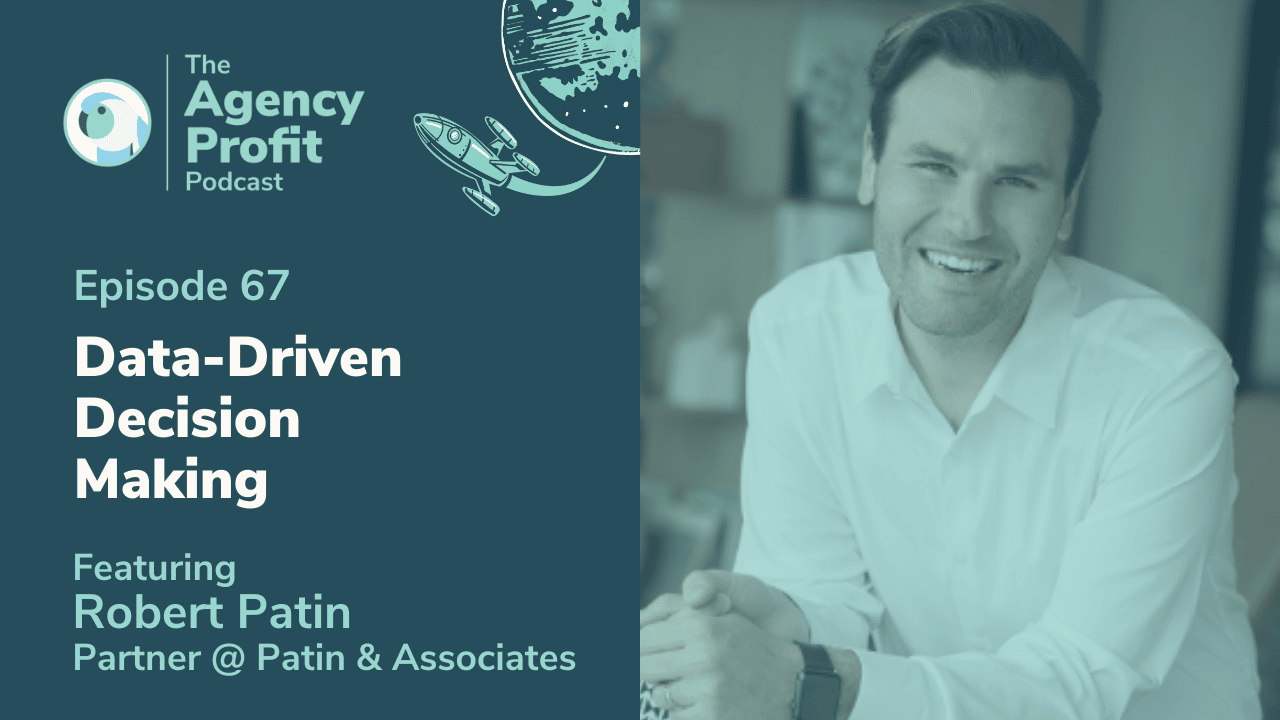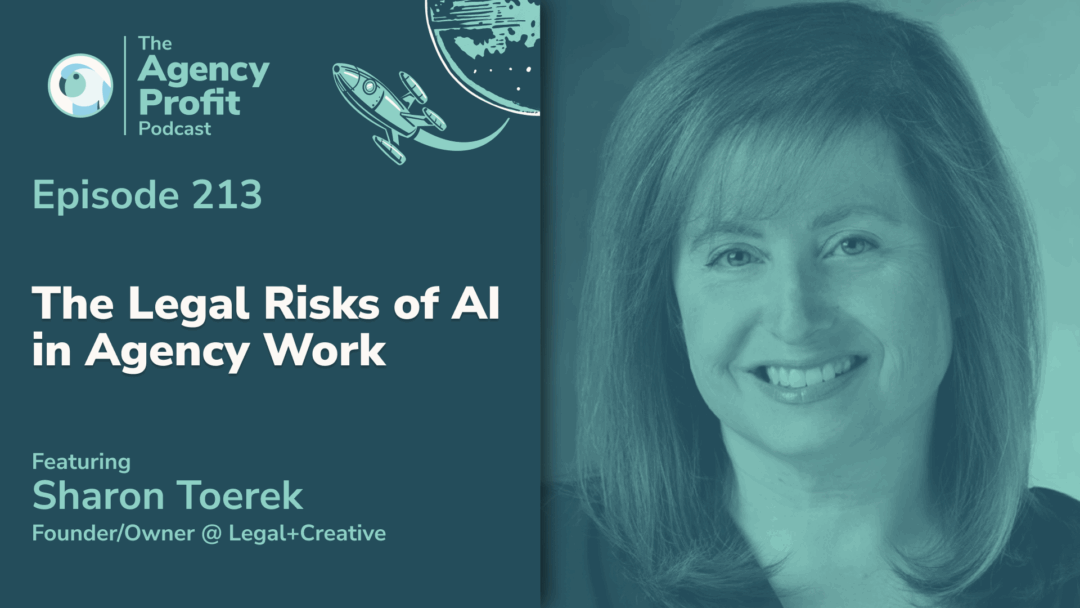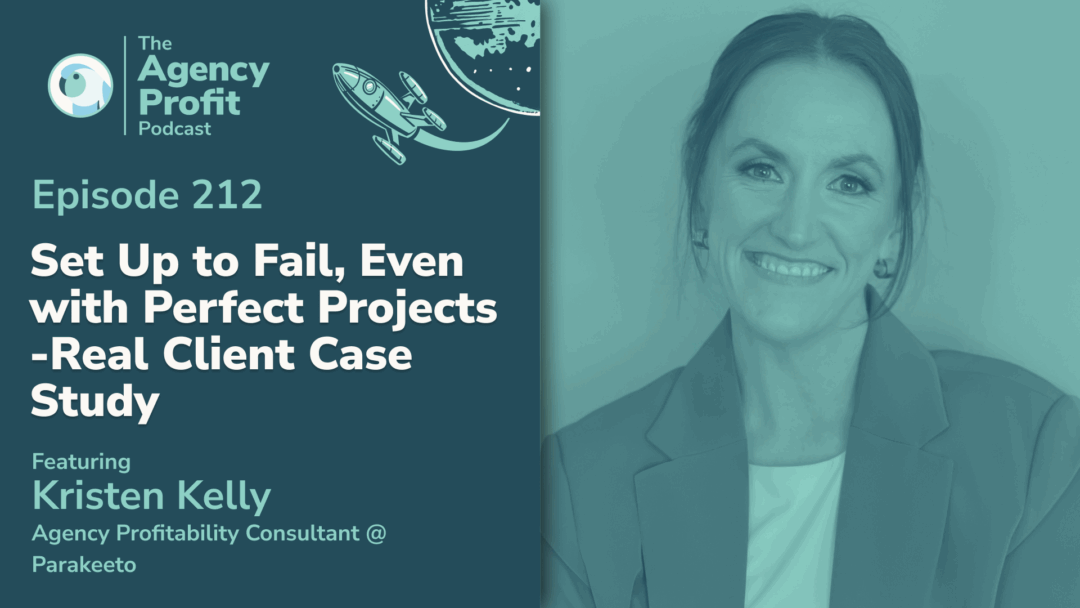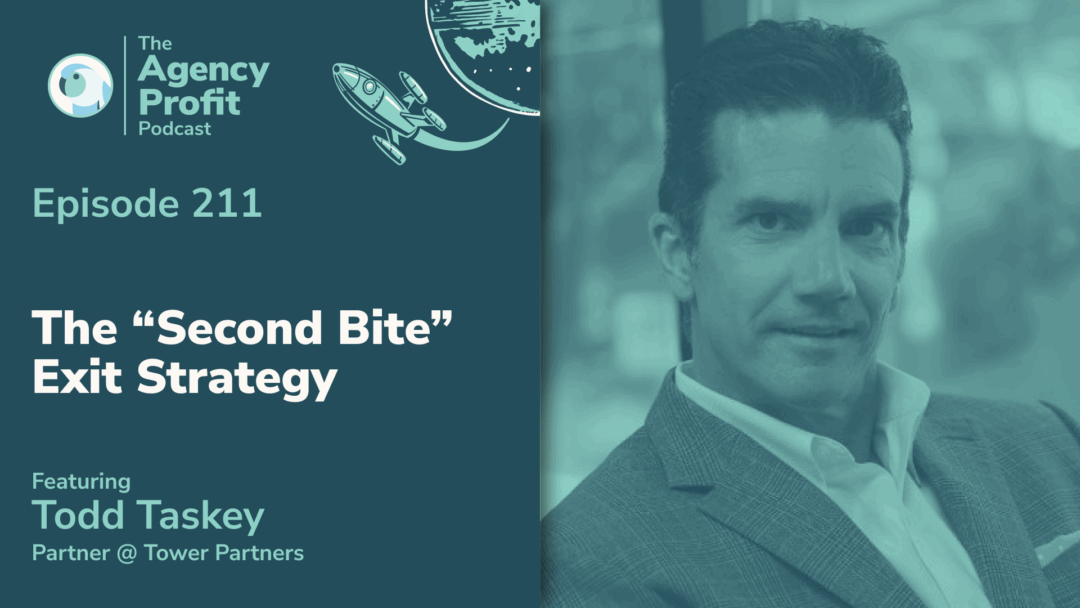Welcome back! In this episode, we chat with Robert Patin of Creative Agency Success. He specializes in helping agencies grow by utilizing data-driven decision-making – while aiding agency owners to maximize profits, and reclaim their lives in the process!
About Robert Patin…
Robert is Managing Partner at Creative Agency Success, a Los Angeles-based business management and consultancy firm. He and his team help creative services agencies to grow their business, become more profitable and develop better strategies, a field in which he’s excelled for two decades.
Not only has he been name-checked in both Forbes Entrepreneur, and The New York Post, he is someone I’ve really enjoyed talking to offline about all of these nerdy processed profitability finance questions that we enjoy tackling so much on the show!
Points of Interest…
- Creating Simplicity in Your Business 2.44
- Diagnosing Business Bloat 4:10
- Data-Driven Price Building 7:33
- Using Data to Redefine Time 9:05
- Estimating Projects and Setting Profitability 16:00
Creating Simplicity in Your Business
So, how exactly did Robert find himself in this space of working almost exclusively with creative agencies?
“Having worked many years in finance, I ended up working internally at agencies. I also spent many years working in photography, so there’s a bit of a creative side to my brain as well – although I’ve discovered over many years that I’m more of an analytical person than I am a creative! This has brought me to a great place; being able to work with creatives, helping them on a regular basis while also utilizing my more analytical side too.”
Being both creative and analytical, Robert focuses a lot on the operational side of the business – which is handy given his prolific background in finance. Conversely, his creative side allows him to holistically view the agency in its entirety, thus bridging that gap between ‘Here’s what’s happening on the P&L side; and here’s how it impacts the business as a whole.’ Considering Robert’s two decades working with clients, I’m keen to unpack any recurring key issues he’s seen clients regularly dealing with.
“The primary issue that I see happen very regularly is agencies trying to be everything to everyone… One of the things I work on with agencies on a fairly regular basis is that ‘Simple is able to scale, and complex fails’.”
We all have some experience of offering a bunch of different services leading to your business struggling to scale. Moreover, it makes your life overall difficult too! This doesn’t just apply to agency owners; in pretty much any service business you need to figure out exactly what it is you do, define who you serve, and the optimum way to operate.
“You don’t have to be everything to everyone. In fact, your clients won’t be better served by doing that. So, creating that simplicity in your business will really help you be able to get to where you need to be.”
Side note: our Agency Profit Toolkit is a one stop shop for you to be able to outline some of these crucial profitability numbers to a potential buyer. Spreadsheets, templates and training videos, you name it, it’s all in the toolkit. Grab yours free at the link below:
Diagnosing Business Bloat
I have a saying; “Agencies don’t often suffer from starvation, they’re suffering from indigestion. They just happen to feel the same.” If you’re stuffed to the gills with all sorts, it hinders your ability to build the great systems and processes required on the back end of the business to run it. Why? Because you need predictability for planning. The more variability we have on the front end, the harder it is to do all those things on the backend.
With that in mind, I ask Robert how he helps businesses grappling with their positioning, and to diagnose the symptoms such a business may experience, thus indicating the need to narrow their scope. Some of the key indicators that you will see happen regularly include…
- When you look at a project and it isn’t profitable
- You’re having issues with utilization ratios (i.e. they’re extremely high).
- The talent/team aren’t really engaged in the agency anymore.
“So many agency owners created their business because they were really good at what they did – be it graphic design, web design, branding – they were passionate about it. They enjoyed it. And, over time, the business was created by the club. Or by the team. I would say, ‘stop and just take a minute to think about why you’re in this business in the first place’? What do you enjoy about it? Who do you enjoy working with? And start from there.”
A mentor of mine, Dan, likes to say that “the biggest risk to the business is not the market, it’s not competition – it’s the founder not wanting to do it anymore.” So, we’re better off really being clear about who we want to work with on the front end. ***Robert explores this further from the 5:34 mark***
Data-Driven Price Building
Now that you’ve narrowed your scope, what are the types of service offerings that are best suited for your skillsets/agency/who you like to work with? Put another way; what else must you do to actually realize the benefit of having a more specific offering on the front end? How can you capitalize on that? Initially describing it in a higher-level place, before delving into the nitty-gritty, Robert advises the following…
“I would first determine the minimum project you want to actually bring in. What does that look like? What does your ideal client look like, what does that ideal project look like? Then, from that point, start to detail out.”
So, what does ‘detailing out’ look like? Start by asking yourself such questions as:
- What are the results that you have generated for clients in the past?
- What has been the ROI for that client?
- Define the amount of sales or the results of the work undertaken
When you apply these answers to between 5-10 client case studies, you have a form of predictability, a parameter around which you can build a reliable pricing system. This is where the nitty-gritty part comes in… Robert’s preference is building out a sales budget template on your tool of choice – be Excel, via an App, or Software.
Using Data to Help Redefine Time
Don’t worry, we’re not tinkering with the space-time continuum; instead, we’re just asking you to think about time differently. Or, as Robert puts it:
“Where I see agencies go in the better direction, they start thinking about time as a percentage of a person, rather than a number of hours.”
In Robert’s experience; nine times out of 10, an agency that says ‘Oh, that can get that done in 10 hours’ is going to veer 100% off course. However, if you think about it in terms of ‘Hey, this person can handle five projects of this size. So, it’s going to be 20% of that person.’
In short, you need to build in the administrative cost of that person into the proposal. Consider the amount of time that they’re going to be on vacation, the water cooler talk; all of that stuff that makes someone enjoy being at work, while giving them the space to not feel overwhelmed.
***Robert discusses this theory further from 9:48. I delve into some agencies that have managed to successfully employ this ethos from 11:38 ***
Estimating Projects and Setting Profitability Targets
If you have a 70% gross margin and spent 30% of your income on overhead, then you should be in a reasonably good place to hit your net margin target. So, at this point, I’m curious about Robert’s playbook for thinking through estimating projects and setting profitability targets when scoping projects.
Firstly, however, you need to distinguish the difference between a project that includes a ton of outside vendor/freelancer/media costs, because there you’re going to evaluate them completely differently.
“So let’s talk about 100% agency fees. Service-based, right? Ideally speaking, we’re wanting to be anywhere 70% plus in gross profit range. It can be difficult unless you have built a reputation and a brand, and people are actually coming to you. However, until you build that brand, it will be difficult to get to that place.”
***We touch off the efficiency of GNA, BD, overheads and building traffic light systems into client Excel sheets from 16:55 mins***
Key Takeaway… Data-driven Results Help You Sleep
All of this bubbles back up to the baseline thesis, right? In order to build great agency operations, we need to make good assumptions about client work. The best way of doing that is with our reliable friend, Time Tracking.
By utilizing Time Tracking tools, you’ll start to recognize that you need to start working in blocks of time. As human beings, we know for a fact can that we can’t effectively multitask indefinitely. So, stop trying to do it. It’s not good for you.
When I hear from an agency owner that they expect their team to build 40 hours a week. It makes me want to cry because what they’re doing is building a business model that effectively depends on them exploiting their team in order to be profitable. Why the tears? Because I know it doesn’t have to be this way! From modeling tons of agencies, both Robert and I know an entire team could net out at 60, 65% utilization at the end of the year. And you should still be able to hit 25, 30, 30 5% plus EBITDA. Um, and, and the team doesn’t have to work overtime in order to do so. ***I dig into net profit versus gross profit at 15:23***
The core of this industry is selling our team’s expertise, our team’s time. If your team and your talent aren’t happy, aren’t engaged, and are generally overwhelmed, then your service – plus the results – aren’t going to be optimum. Don’t focus on having utilization rates that are 85% plus because, let’s face it, you’re killing your team if you’re at that utilization rate.
How do you make this switch? Here’s Robert’s final thought…
“I personally have felt so many times – being a business owner and being a financial executive at agencies – that the more I make decisions with data, the more comfortable I feel. Anytime I did it based on gut or like, ‘Hey, this is an assumption that I’m making’, that leaves me unable to sleep at night, with my eyes wide open ruminating on whether I made the right decision. So. I want to make every decision I possibly can with data so that I have the comfort of the data and making those decisions. I love my sleep.”
Want more from Robert? Check out…
Did you learn anything new from this episode? Let us know in the comments below! Our next installment of #APP, on August 28th, will see Marcel bringing his specialized insights into Agency Pricing Quadrants. Our previous blog with Rahul Alim is here…
Agency Profitability Tool Kit
If you’re looking for more resources to help you improve your agency’s profitability, check out the Agency Profitability Tool Kit. It’s full of templates and checklists we use when consulting clients, helping them improve profitability by over 100% – in under 60 days.








0 Comments